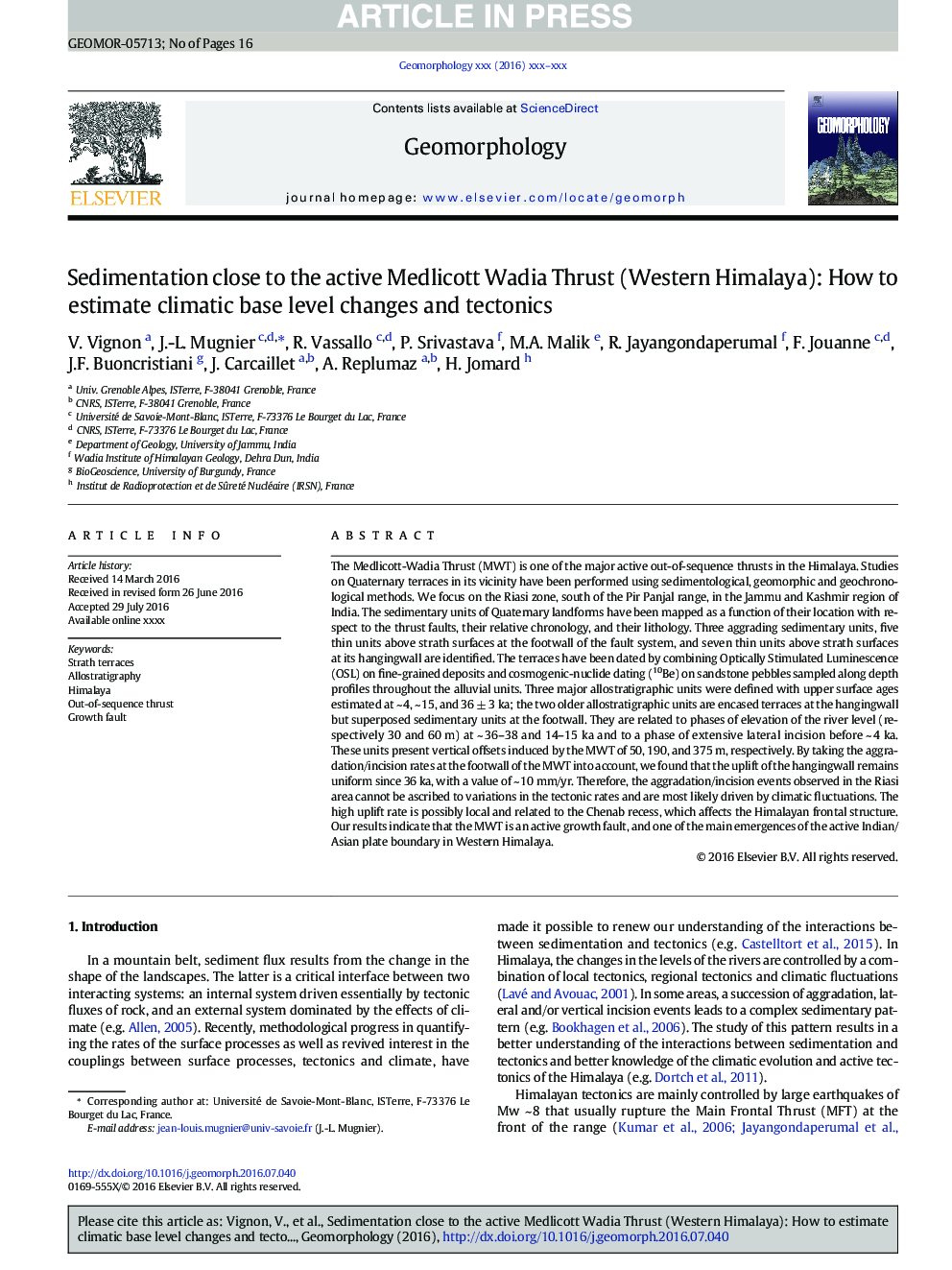| کد مقاله | کد نشریه | سال انتشار | مقاله انگلیسی | نسخه تمام متن |
|---|---|---|---|---|
| 5781105 | 1635365 | 2017 | 16 صفحه PDF | دانلود رایگان |
عنوان انگلیسی مقاله ISI
Sedimentation close to the active Medlicott Wadia Thrust (Western Himalaya): How to estimate climatic base level changes and tectonics
دانلود مقاله + سفارش ترجمه
دانلود مقاله ISI انگلیسی
رایگان برای ایرانیان
کلمات کلیدی
موضوعات مرتبط
مهندسی و علوم پایه
علوم زمین و سیارات
فرآیندهای سطح زمین
پیش نمایش صفحه اول مقاله

چکیده انگلیسی
The Medlicott-Wadia Thrust (MWT) is one of the major active out-of-sequence thrusts in the Himalaya. Studies on Quaternary terraces in its vicinity have been performed using sedimentological, geomorphic and geochronological methods. We focus on the Riasi zone, south of the Pir Panjal range, in the Jammu and Kashmir region of India. The sedimentary units of Quaternary landforms have been mapped as a function of their location with respect to the thrust faults, their relative chronology, and their lithology. Three aggrading sedimentary units, five thin units above strath surfaces at the footwall of the fault system, and seven thin units above strath surfaces at its hangingwall are identified. The terraces have been dated by combining Optically Stimulated Luminescence (OSL) on fine-grained deposits and cosmogenic-nuclide dating (10Be) on sandstone pebbles sampled along depth profiles throughout the alluvial units. Three major allostratigraphic units were defined with upper surface ages estimated at ~ 4, ~ 15, and 36 ± 3 ka; the two older allostratigraphic units are encased terraces at the hangingwall but superposed sedimentary units at the footwall. They are related to phases of elevation of the river level (respectively 30 and 60 m) at ~ 36-38 and 14-15 ka and to a phase of extensive lateral incision before ~ 4 ka. These units present vertical offsets induced by the MWT of 50, 190, and 375 m, respectively. By taking the aggradation/incision rates at the footwall of the MWT into account, we found that the uplift of the hangingwall remains uniform since 36 ka, with a value of ~ 10 mm/yr. Therefore, the aggradation/incision events observed in the Riasi area cannot be ascribed to variations in the tectonic rates and are most likely driven by climatic fluctuations. The high uplift rate is possibly local and related to the Chenab recess, which affects the Himalayan frontal structure. Our results indicate that the MWT is an active growth fault, and one of the main emergences of the active Indian/Asian plate boundary in Western Himalaya.
ناشر
Database: Elsevier - ScienceDirect (ساینس دایرکت)
Journal: Geomorphology - Volume 284, 1 May 2017, Pages 175-190
Journal: Geomorphology - Volume 284, 1 May 2017, Pages 175-190
نویسندگان
V. Vignon, J.-L. Mugnier, R. Vassallo, P. Srivastava, M.A. Malik, R. Jayangondaperumal, F. Jouanne, J.F. Buoncristiani, J. Carcaillet, A. Replumaz, H. Jomard,